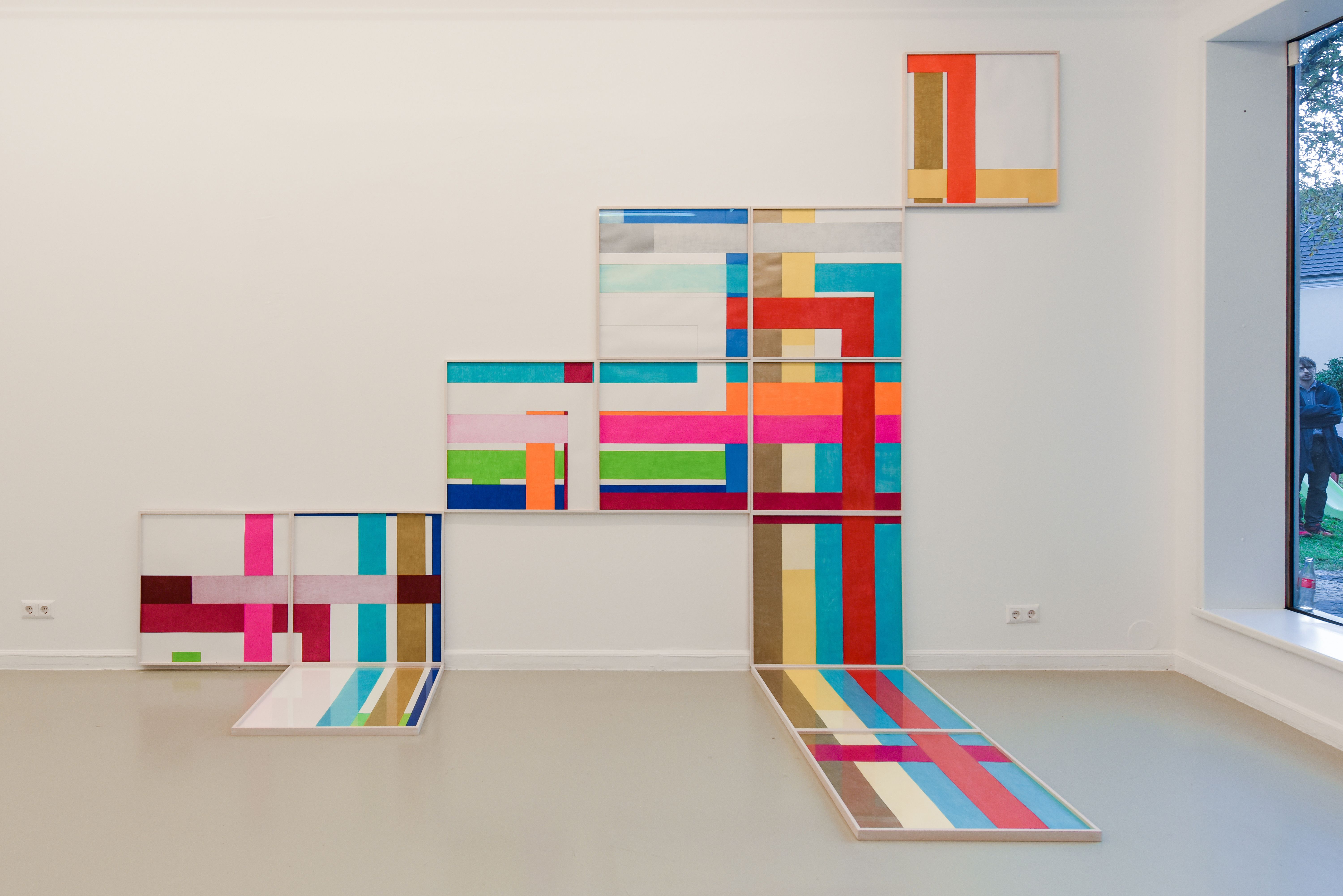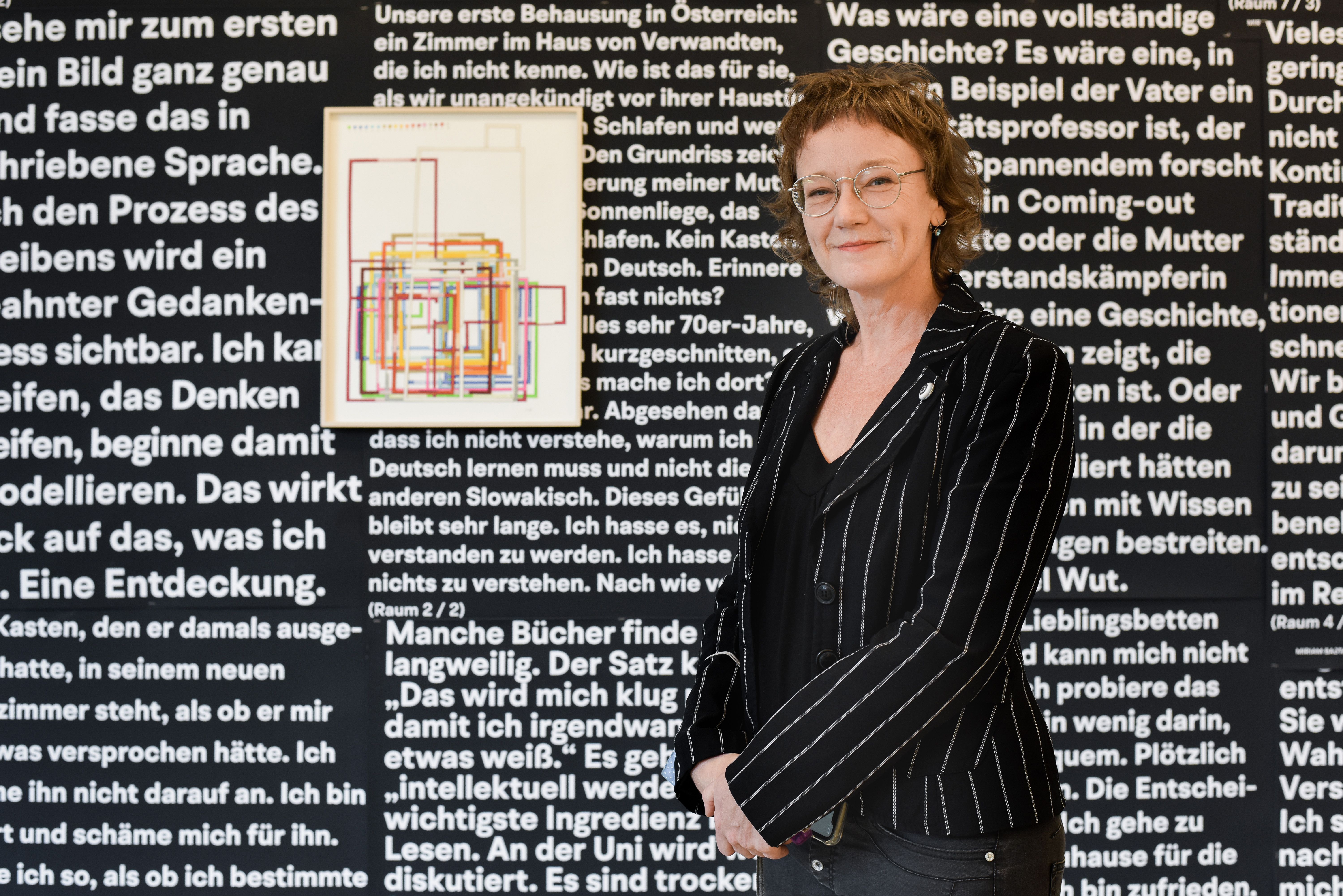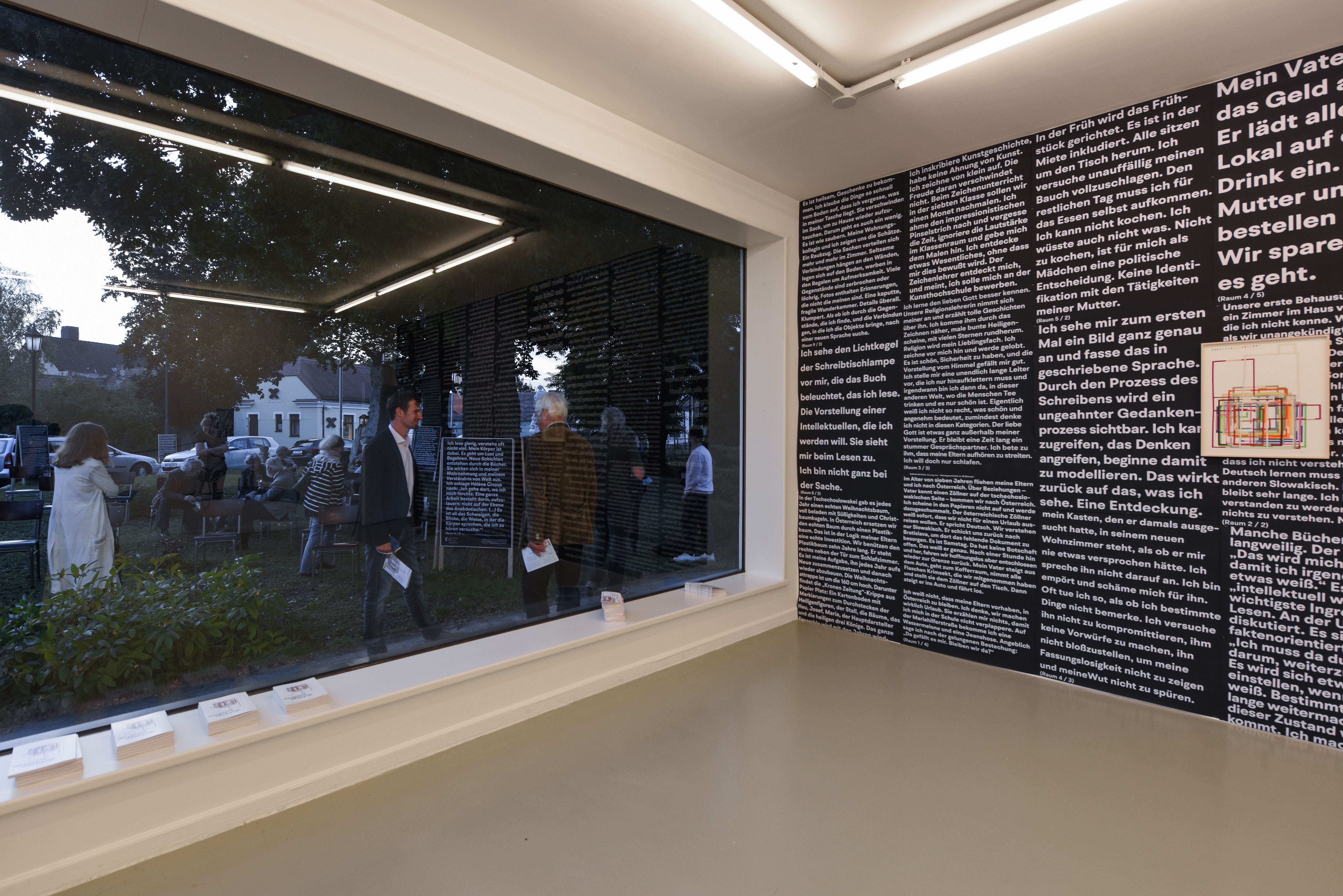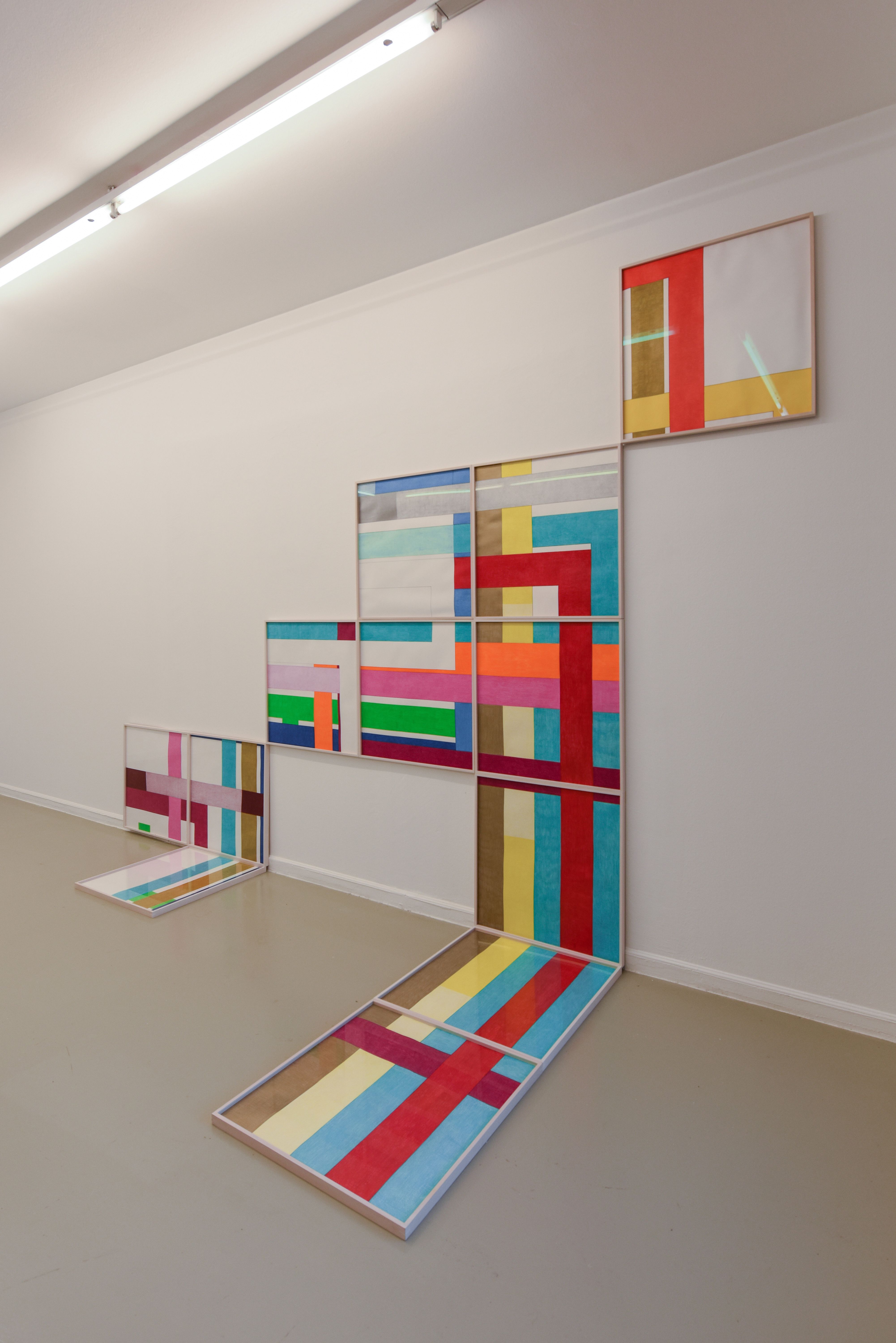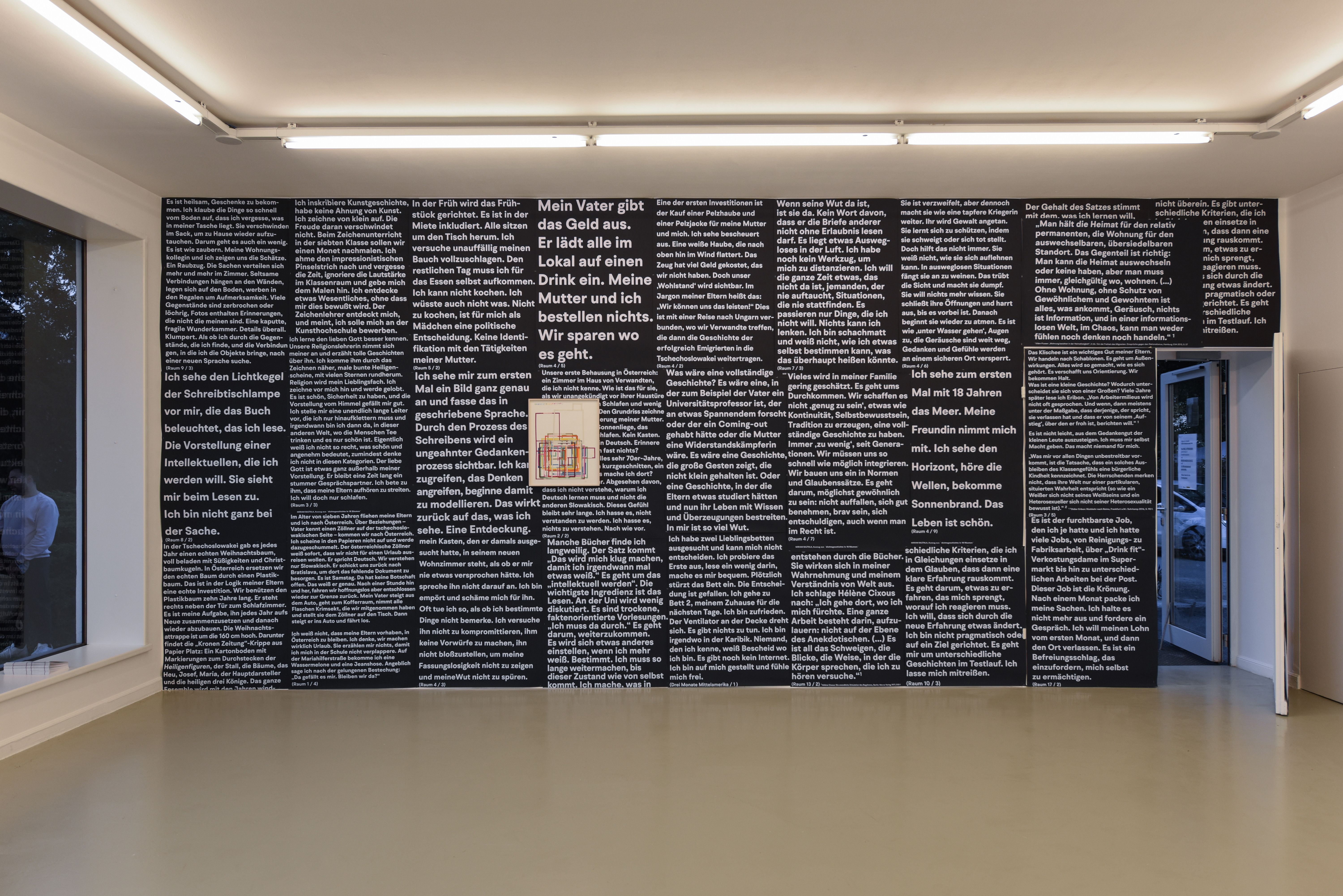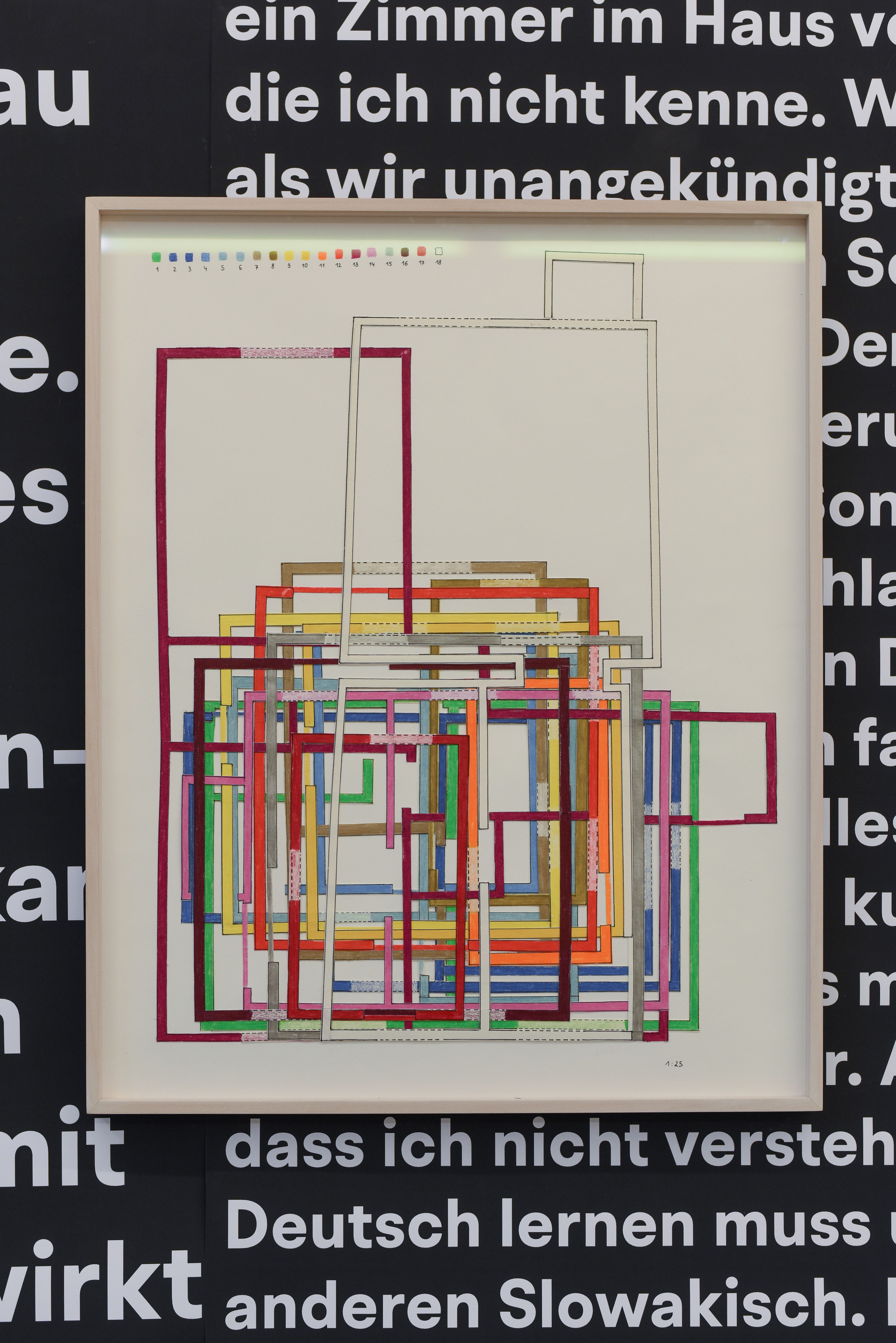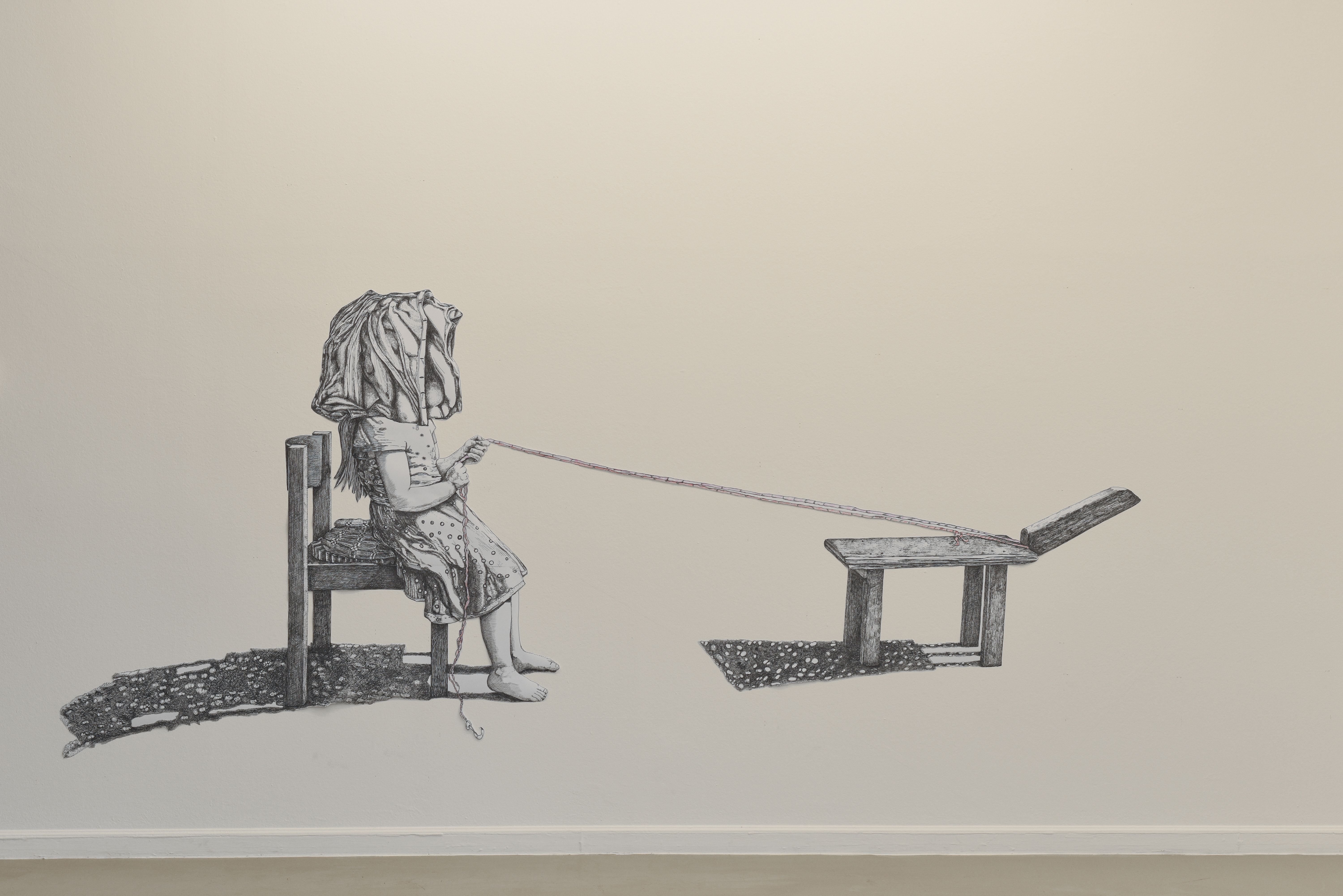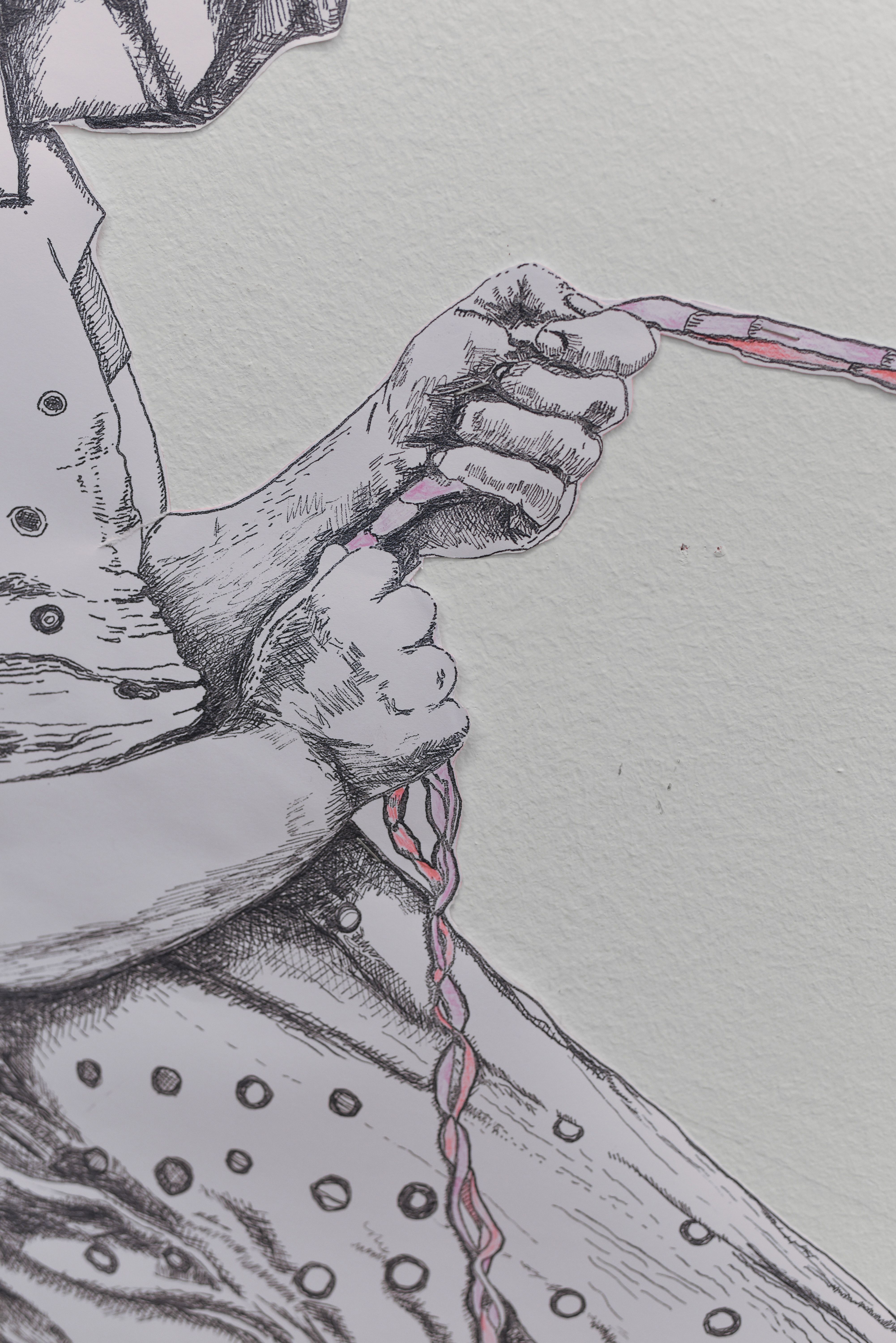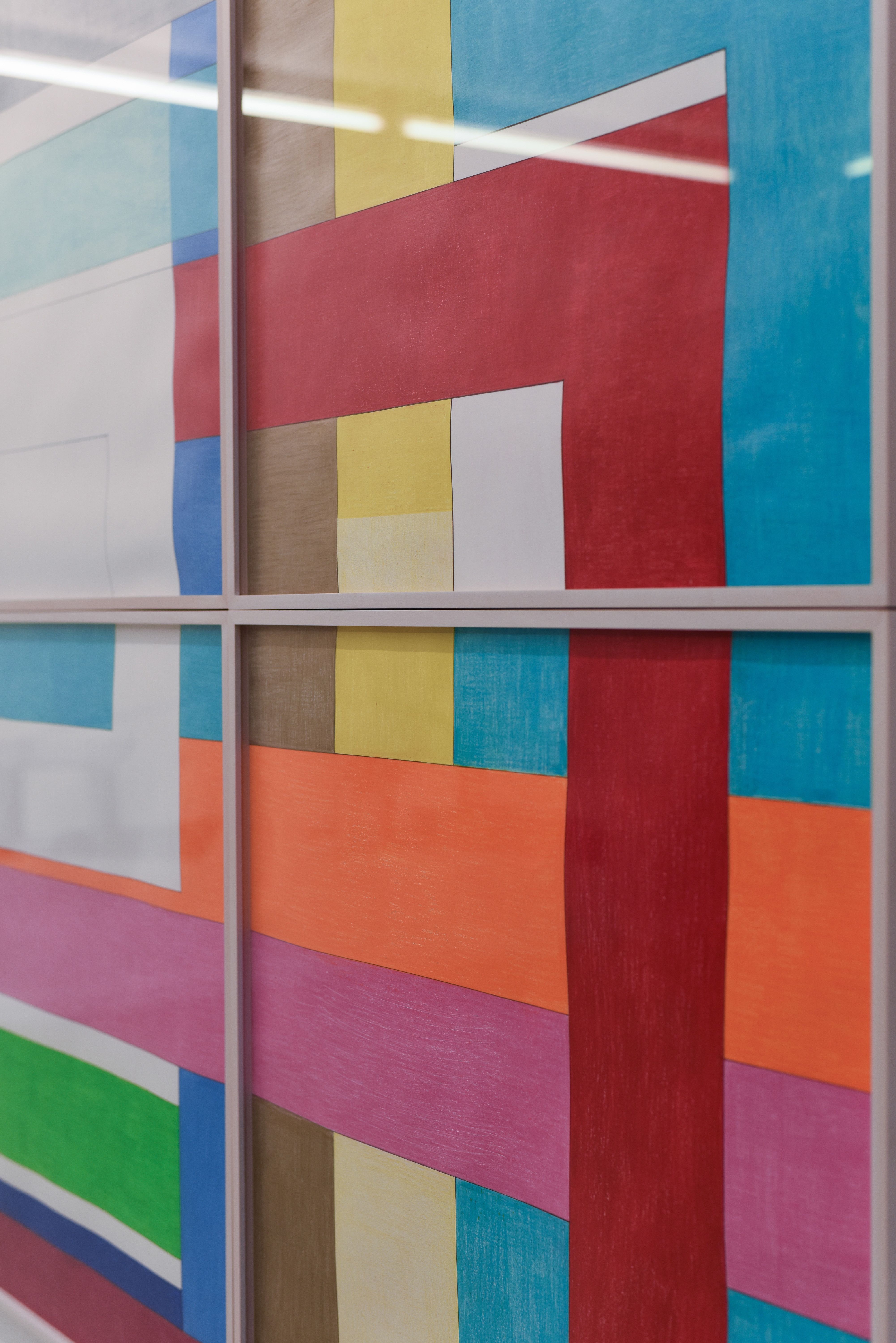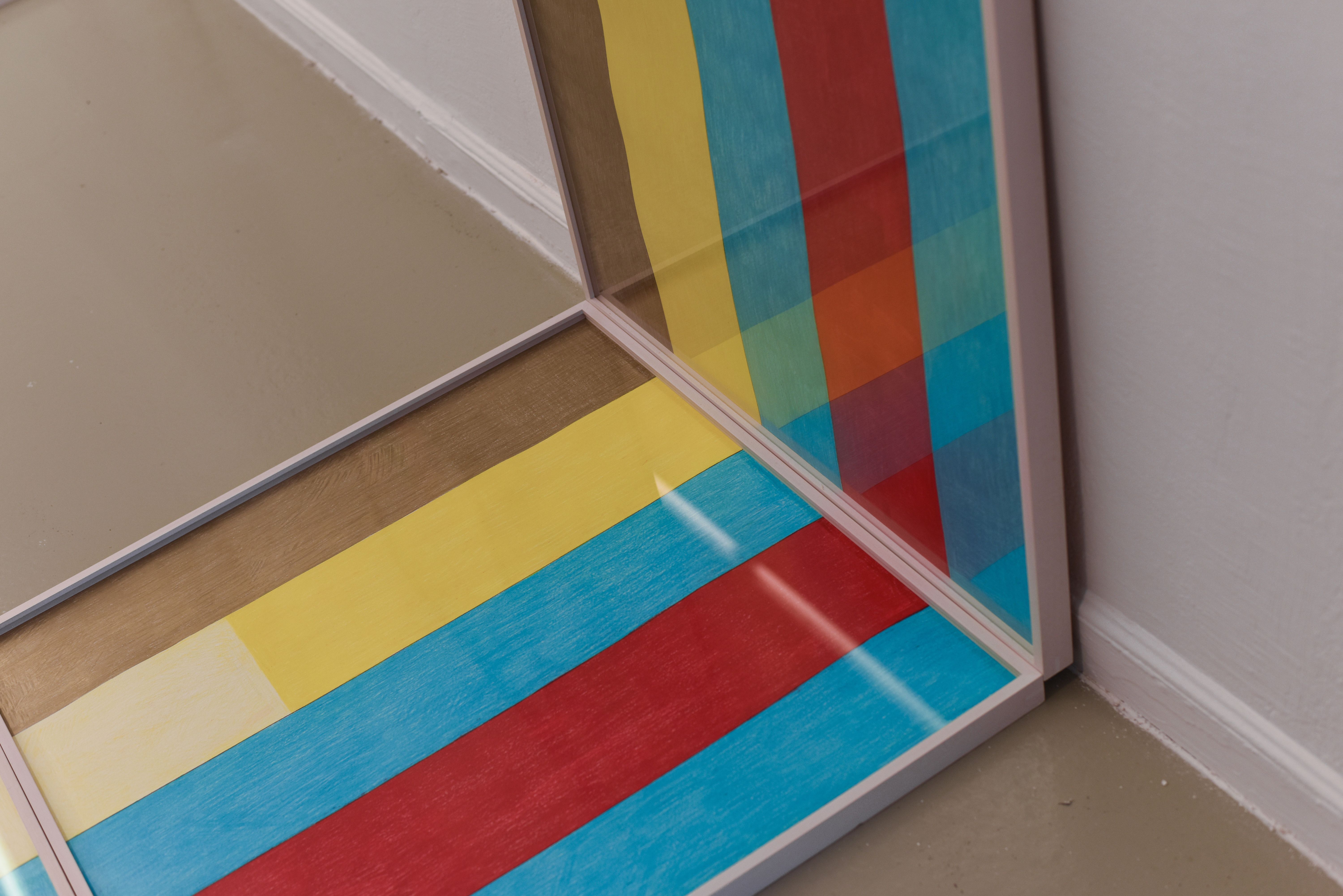Miriam Bajtala
:
Dichtegeschichte in 18 Räumen
Back
Information
When we read about the artist Miriam Bajtala, we are sure to run across the phrase “born in Bratislava, lives, sleeps, and works in Vienna.” By breaking up the listing of living and working, her intervention in the formulaic expression “lives and works in …” plays with the fixed convention in short artist biographies of establishing where an artist is geographically based. Between the living and working is now something that is otherwise always left out and unmentioned: sleeping. She thus not only draws our attention to artists’ lives and work in relation to the global geographic context, which is what we would expect from a professional short biography; she also impels us to relate living and working to the experiences and the material facts of everyday life and habits. The unusual addition of “sleeps” to “lives and works” highlights the side of the artist’s life that has to do with living in a certain place. But while “lives and works” has become such a specific form of biographical abstraction that ascribes artists to a specific place from which they make their contribution to the global art world, the use of “sleep” brings back the mundanity of their actual lives and their work—with the particular conditions, realities, and potentials these entail—which is otherwise withheld from the readers’ associations and imagination.
Bajtala’s multi-part work, which she titled dichtegeschichte in 18 Räumen (Compact (Her)Story in 18 Rooms), guides us through the floor plans of the apartments she has lived, worked, and slept in. With the exception of the apartment she is currently living in, her story and history in 18 rooms was reconstructed from memory. It is a biographical narrative of where she has lived that condenses her abstract and concrete, experienced reality into a living memory and memories of living in the form of drawings and texts. For the drawings she created of assembled and interwoven floor plans in the Weikendorf exhibition space, she based the mode of representing her past living situations on methods of architectural drawing. Although these methods are clearly recognizable, Bajtala has made decisive changes that distinguish her floor plan drawings—the main one being that she chose the scale of 1:1. Had her intention been to make all of the floor plans readable for visitors in one glance, she would have been better off to choose a different scale. Instead, the scale of 1:1 demonstrates to beholders that the experience of living in a certain space goes far beyond the exhibition room, making us aware of the many square meters that collectively stand for all of the rooms she has lived in that cannot be reduced to fit the scale of an exhibition space, with its fixed number of square meters. This in turn causes us to reflect on the overall number of square meters we ourselves have lived in and that are impossible to reduce. The square meters are not only the sum of space, but also of time. How much living, how much sleeping, how much working is done in them? The space that is represented in the scale of 1:1 only comprises certain parts of the total square meters the artist has filled with her life and refers to the richness of the concentrated experiences of living, which inevitably can only ever be shown as details. The abstraction that always goes hand in hand with such concrete architectural plans enables us not only to connect these assembled details of floor plans with our idea of Bajtala’s personal history of living in various spaces; it also enables us think about our own reconstructed floor plans and the memories these entail. In her book also titled dichtegeschichte in 18 Räumen, Bajtala presents all of the places she has lived in in chronological order. All 18 rooms are introduced with a short description of their geographical location, the configuration of the rooms, and the floor space. This is followed by a picture of the floor plan and a first-person autobiographical narrative that transforms each plan and associated experiences into a story. This method of connecting each floor plan—as it is represented in the abstraction of the architectural drawing—to the personal concretion through the first-person narrative establishes a representational mode of living memory and memories of living that include lived-in spaces and the life lived in them. They also refer to the many ways of reading the memories of living that connect the individual and the collective levels. They are individual because people associate their personal memories of living, sleeping, and working with those rooms in which the activities, experiences, and feelings that are inherent to residing in a place have occurred, meaning that living memory and memories of living are based on individual and subjective residential trajectories. They are also collective because the apartment floor plans should be regarded as storehouses of a collective living memory born out of the many lives lived by the people who have resided in these apartments, often over many decades or even centuries. Through the reconstructed floor plans and the experiential knowledge stored within them, living memory and memories of living can become interconnected.
Elke Krasny
Images (11)
